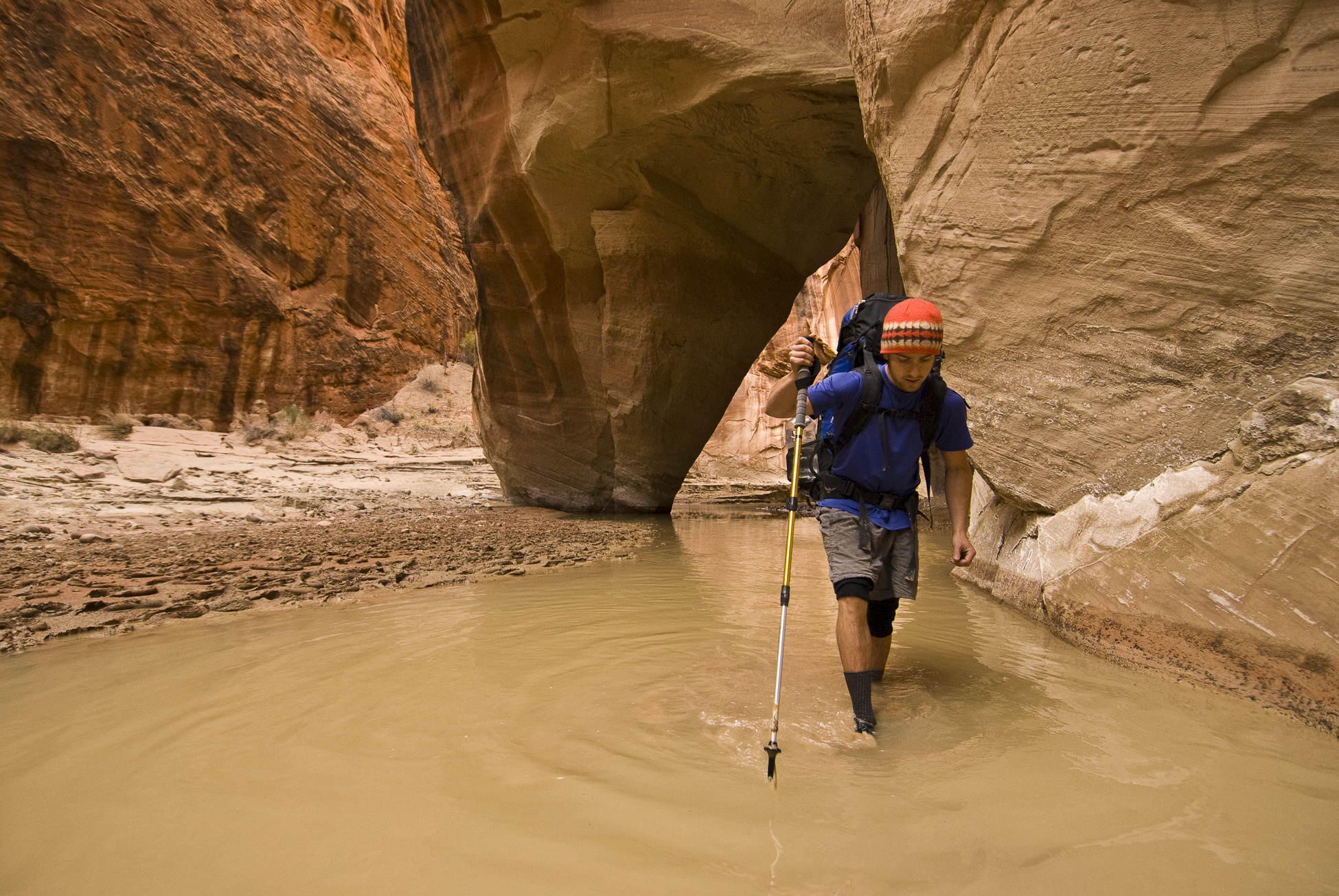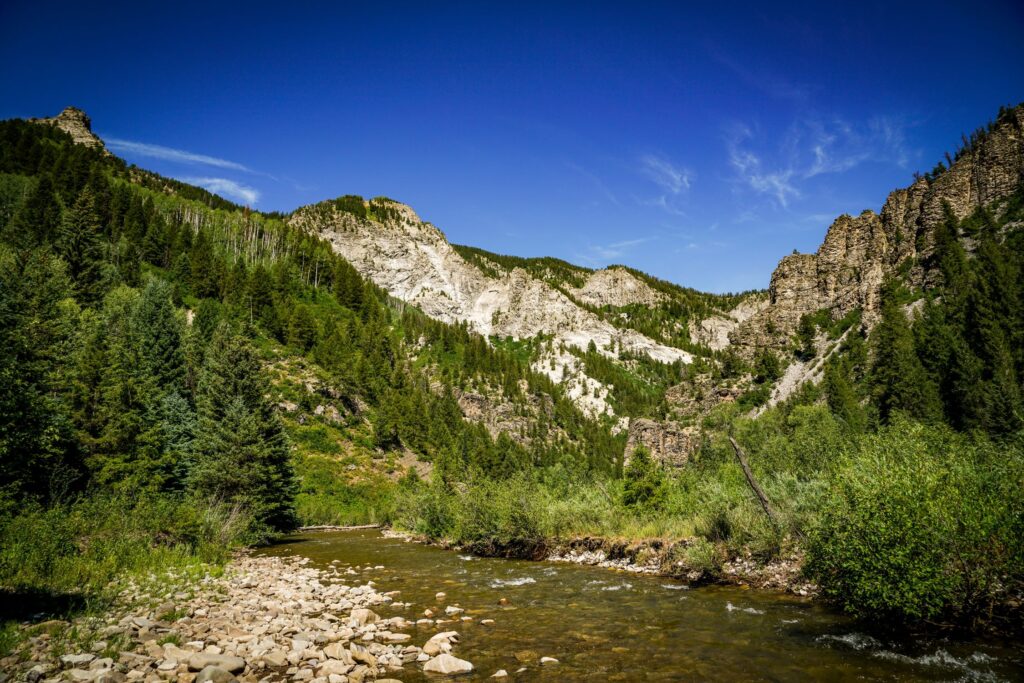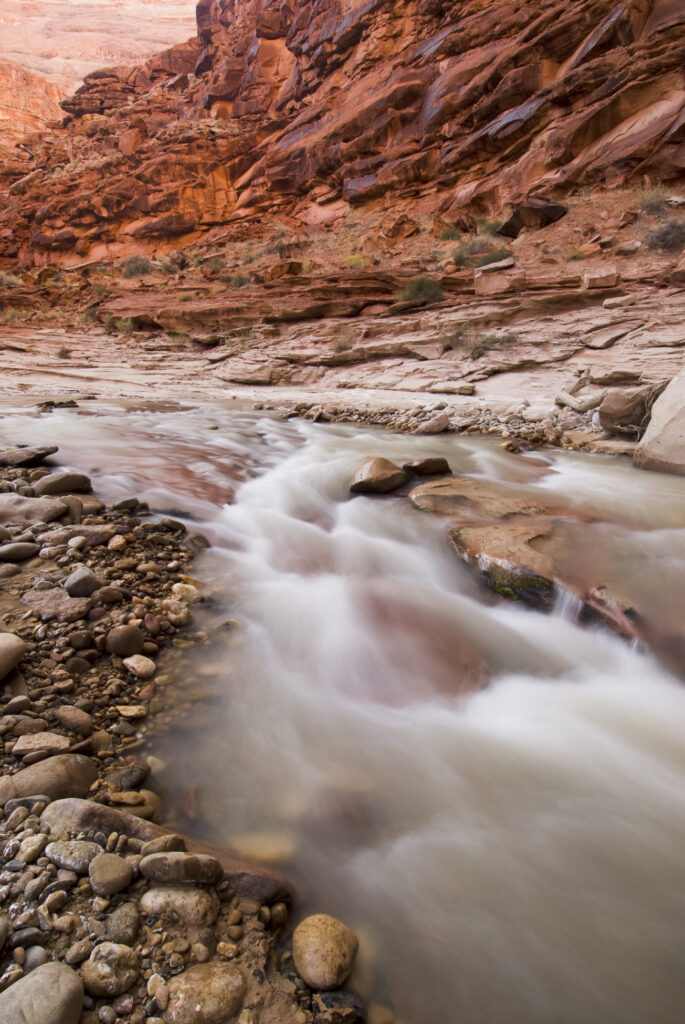Paria River

While some rivers are celebrated for cobbled floors that flash through cool, clear water, the Paria River is best known for its turbid, muddy waters. The Paria is an expert in the delivery of sediment, which is critical for the health of all rivers, and for the habitat they provide. For the weight of its impact, the Paria is a relatively small stream that flows 95 miles south from its headwaters in the Grand Staircase National Monument of southern Utah to its terminus with the Colorado River, just downstream from Lee Ferry in the upper reaches of the Grand Canyon.
The Paria is celebrated as both a river and slot canyon. Mesozoic shale and sandstone shed like powdered sugar from the canyon walls, cascading to the canyon floor on the height of a breeze or on flood waters through the canyon. Unlike its sparkling counterparts, the Paria is record-setting for its unique sediment transportation abilities and the quantities it delivers, and it performs this critical function for none other than the Colorado River. Although it doesn’t stand alone as a gifter of grit and sediment to the main channel, the Paria certainly reserves a seat near the top of tributaries credited with giving the Colorado River such a silty-legacy that early explorers and writers described it as “too thick to drink and too thin to plow”. While all tributaries play a critical role in the building and maintenance of a river’s ecological functions, the Paria plays a uniquely important role in the character of the Colorado, especially since Glen Canyon Dam.
“Paria Riffle,” where the Paria meets the Colorado near Lee Ferry, is the first rapid that Grand Canyon boaters encounter after they start their nearly 300-mile trip. Before meeting the Paria, the Colorado River is emerald green and bracingly cold, which is great for nonnative species like rainbow and brown trout, but very hard on the native fish and amphibians of the region, not to mention the beaches and backwaters. The Paria helps change that, so much so in fact, that the high flow restoration events of the Grand Canyon depend almost entirely upon the amount of sediment that the Paria has moved that year. Once there is enough sediment, a high flow event can be triggered, and fish, frog and humans alike rejoice.
Aside from its vital role as transporter of sediments, the Paria River provides year-round green corridors in the open valleys of its rocky headwaters, located within the Grand Staircase-Escalante National Monument. And, for the well-timed and adventurous boater, a float through the canyon’s painted walls is a dream. The lower 20 miles of the River are within the Paria Canyon-Vermillion Cliffs Wilderness Area where deer and desert bighorn make home in some of the Colorado Plateau’s most spectacular slot canyons.

Let's stay in touch!
We’re hard at work in the Southwest for rivers and clean water. Sign up to get the most important news affecting your water and rivers delivered right to your inbox.
Did You know?
Historically (like in 1925), the Paria Canyon pulsed with over 16,000 cfs. These large-scale floods have tapered off as diversions upstream have increased.
Powell called the river “Pa-ria”, which he translated as a Ute word meaning “water muddy”
Before Glen Canyon dam, the prehistoric and dinosaur-like Colorado pikeminnow (nearly six feet long and over 80 lbs) spawned at the mouth of the Paria.
Samples from the Paria have attempted to quantify just how much sediment the tributary carries to the mainstem—and the Paria sets the record for the highest sediment concentrations of any stream of river in the US. So, what’s “a lot” of sediment? The Paria carries about 2 pounds of mud in one quart of water.
What states does the river cross?
Arizona, Utah
What can i do to help?
Stay informed with what is going on with rivers across the Southwest by following our Southwest River Protection Program.
Tell the Trump Administration to retain and support the Waters of the United States rule under the Clean Water Act. Take action here.

